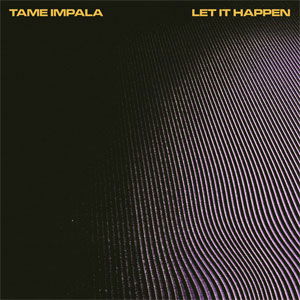Song Stories: Tame Impala: Let It Happen
In 2015, Kevin Parker had already cast himself as the saviour of modern rock music. With Lonerism, he had crafted a modern psychedelic masterpiece, a record that took the trippiest moment of The Beatles’ 'Tomorrow Never Knows' and stretched it into a twelve-song, kaleidoscopic ode to solitary bliss. Critics and fans alike hailed Parker as a visionary, a one-man bridge between the psychedelic past and a new era of introspective rock.
But by the time Currents arrived, Parker had grown weary of the mantle of rock messiah. He wasn’t interested in saving rock anymore; he wanted to conquer pop. When the lead single, 'Let It Happen', was released, it startled long-time fans with its shimmering, electronic pulse, but it immediately captivated a broader audience. Parker was no longer just a psychedelic rock wonderkind; he was a pop architect.
The song itself is a meditation on personal transition, the feeling of letting life flow while simultaneously wrestling with change. Its creation was a globe-spanning affair, pieced together in hotel rooms, festival grounds, and trains across Europe and the United States. In a 2015 interview with Under the Radar, Parker described its peripatetic origins:
"I think most of that song was put together at different times, when I was on tour, actually. I remember it came to me, I think I was walking to my hotel room in Oklahoma. And then the chorus, I was at a festival in Hungary or Turkey. And then the midsection, the jam bit, I was on a train. That's a bit looping and a weird repetitive thing going on, and I had my laptop on a train in France, going to Toulouse. I think with that song, one thing led to another. I was just jamming by myself in the way I do, and I put it on a loop to see what sounds cool. I just see where it takes me."

Clocking in at nearly eight minutes, Let It Happen is a masterclass in sonic evolution. Its second half dissolves into a repeating, looped section reminiscent of a scratched CD, punctuated with stripped-down, almost gibberish lyrics. Vocals are manipulated through a keyboard sampler, creating a vocoder-like texture that feels both futuristic and organic. The result is immersive, hypnotic, and unpredictable.
It’s almost hard to imagine now just how divisive the reaction was. Parker had previously embraced comparisons to The Beatles and Pink Floyd, and with 'Lonerism', he was the poster child for modern psychedelia. But 'Let It Happen' had more in common with Daft Punk and Michael Jackson than the 1960s icons that critics had long tried to pin him to. It was both a bold leap forward and a logical evolution: Parker had never been content to dwell in a single motif.
Yet, despite its sonic experimentation, 'Let It Happen' is unmistakably a Tame Impala record. It marries dancefloor sensibilities with sun-drenched psychedelia and lush orchestral strings, all filtered through Parker’s unmistakable voice and production style. With this track, he became the pop star’s favourite pop star, an artist who could straddle the worlds of introspective psychedelia and chart-topping electronic pop without losing an ounce of identity.
It's arguably the most important song that Parker ever released. The song and its parent album 'Currents' turned Kevin Parker from a self-proclaimed loner into one of the most important musicians on the planet. The release of 'Currents' led Parker to collaborate with Mark Ronson, Lady Gaga, Rihanna, Kanye West, Dua Lipa, The Weeknd, Gorillaz, Travis Scott, Don Toliver, Melody's Echo Chamber, Justice, and the Flaming Lips.
As well as being his most important, I still think it's his best. No one artist before or since does what Parker does. Upon hearing this song for the first time, my whole musical palette was opened to so much more. Every generation, I think, has those songs and albums that become touchpoints, cultural cornerstones. For my generation, 'Currents' is one of those albums, and 'Let it Happen' is where it begins.
Thank you for reading
Jack